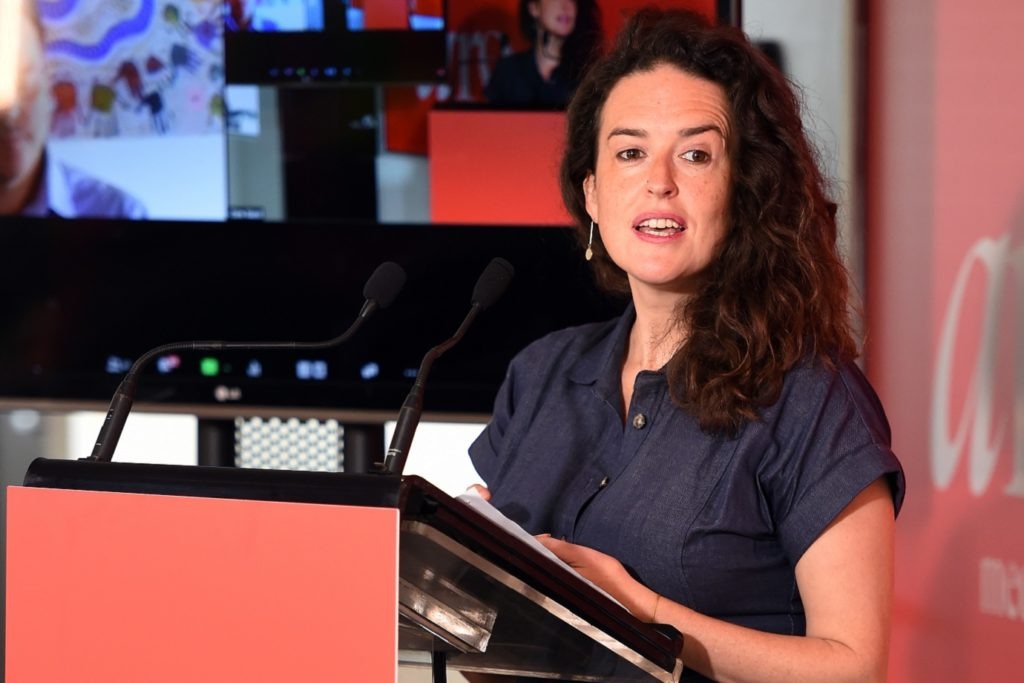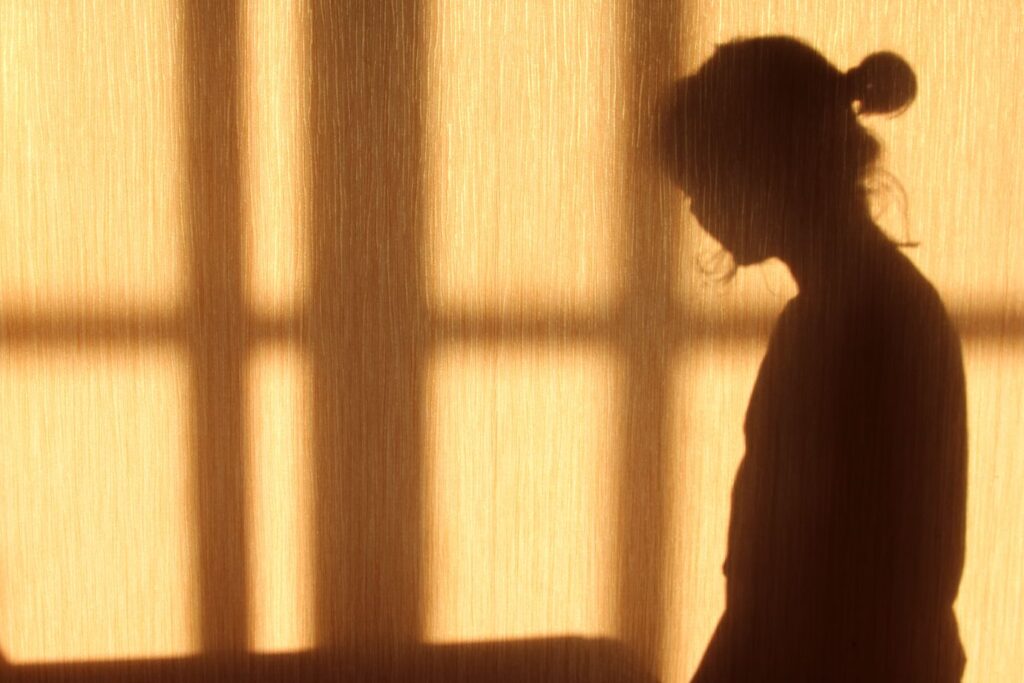“I didn’t know I was in an abusive relationship because he didn’t hit me”.
Nineteen years ago, Beth didn’t realise the man she fell in love with would break her.
An estimated 23 per cent of women and 16 per cent of men from age 15 have experienced emotional abuse. Pete, a divorcee from Queensland moving to Adelaide, told Beth he had been “married to a crazy person”. Investigative journalist Jess Hill said many survivors still felt shame when retelling their experiences of coercive control.
“They see the abuse through the perpetrator’s eyes,” Jess says. “Coercive control can be used so frequently that the victim doesn’t even notice anymore”.
Isolation
Coercive control is a ‘pattern of domination that includes tactics to isolate, degrade, exploit and control’ a person, ‘as well as to frighten them or hurt them physically’.
Beth’s self-esteem was “shattered”.
The couple discussed having children; a year later, she fell pregnant. Pete made Beth follow him interstate for his work. He would accuse Beth of nagging. He went on weekend benders.
Pete said he’d been “working really hard and needed time off”.
“He’d project that he was working and the important one. I needed to fit around him,” Beth said.
Beth and their daughter were left isolated and alone.
Red flags
According to South Australian Shadow Minister for Women Michelle Lensink, women have been taught that intimate partners “were overbearing because they loved you”.
Lensink said that, as a society, we now need to be aware of the cost of co-dependency.
“Boundaries are important, and losing autonomy is wrong”, Lensink said.
Pete made Beth feel guilty if she didn’t have sex with him.
“He would binge drink then talk about suicide”, said Beth.
Pete found photos of Beth with male friends on her hen’s night. He threw his computer in anger.
Commonly, coercive control involves social isolation from the victim’s friends and family, monitoring a person’s communications or verbal abuse.
Jess said, “There is no better way to get people to do or be what you want than coercive control”.
“We’d organise to go to an event, then he’d pull out at the last minute, so I remember making many excuses for him,” Beth said.

The cost of co-dependency
Beth’s daughter was born before she and Pete married. Two months later, feeling the pressure of debt Pete had accumulated, Beth returned to work.
It is estimated domestic violence costs $20 billion annually.
“Perpetrators create co-dependency, leaving survivors feeling fundamentally weakened and sometimes incapable of surviving on their own”, Jess said.
A report published in 2022 found one in 30 women across Australia had experienced financial abuse.
Pete was on an executive management wage, but the couple “were always in debt.”
“We didn’t have any money,” Beth said. “I thought if I went back to work, we’d have some income.”
Lensink said this “pattern of behaviour” has made policing the issue problematic.
“We need to develop more services for the recovery phase, which needs to be supported by the Commonwealth”, Lensink said.
The federal government has implemented a domestic violence payment in recognition that when a person leaves a relationship, they leave everything behind.
The escaping violence payment (EVP) was introduced in 2021 by the federal government to offer financial assistance to help families set up a home free of violence.
Under the scheme, survivors of family violence can access up to $1,500 in cash and up to $3,500 in goods and services to help them leave a violent home.
Between July and September 2023, 57,041 applications were made for the EVP, but only 29,437 were deemed eligible.
Why didn’t you leave?
Beth tried to explain to those who asked why she stayed, “It was that unawareness”.
Jess Hill says survivors often don’t realise they have any options. “It changes the minds of people subjected to it because you feel you have been invaded by someone”.
Despite increasing state pressure, successive federal governments have failed to implement national coercive control legislation.
“The only way to change the priority of physical violence as isolated incidents is to change laws”, Jess said.
Lensink says, “Police and emergency services need to be retrained and educated about what a breach in the law is before they can make those judgements”.
Jess said perpetrators create a “total undermining of a person’s instinct and psychological integrity, making survivors feel at their core that you are worthless, and you cannot survive on your own”.
“When you say you’re leaving them, you become their target,” Beth said.
Fearful for her safety and that of her now three-year-old daughter, she rang her mother from a phone box, telling her she felt “unsafe.”
When Beth’s brother came to her aid, Pete said she was “lying about everything.”
Although a turning point for Beth, ensuring her daughter was safe was harder.
“He wanted my daughter to think he was her everything”, Beth said.
Pete said Beth was “abusive and a bad mother”.
At age four, Beth’s daughter was diagnosed with autism and an intellectual disability. Pete had moved interstate, leaving Beth a single mother. Years later, when Beth’s daughter became a teenager, she wanted to build a relationship with her father and moved interstate with him.
Beth wanted to support her daughter’s decision. The cycle of coercive control continued.
“He took over her NDIS and cut off her support”, Beth said.
“He changed her phone number so I couldn’t contact her.”
Beth said she thought the courts would recognise the situation as “parental alienation.”
“My daughter had trouble with friendships but was doing well, getting therapy, and then he took our relationship away.”
“I was her safe person, yet he made it look like he was the safe person.”
Beth hopes their relationship can be salvaged as the time approaches for her daughter to turn eighteen.
“I know we will be super close one day, but I don’t know when it will happen.”
If this article has raised any issues for you or you need to seek help from someone you know please get in touch with any of these services:
SA Women’s Safety Services SA (WSSSA) 1800 800 098
NAT 1800RESPECT 1800 737 732
ACT Domestic Violence Crisis Service (DVCS) (02 6280 0900)
NSW Domestic Violence Line (1800 656 463 / TTY 1800 671 442)
NT Catherine Booth House (8981 5928)
QLD DVConnect Womensline (1800 811 811)
TAS Safe at Home Family Violence Response and Referral Line (1800 633 937)
VIC Safe Steps Family Violence Response Centre (1800 015 188)
Become a Women’s Agenda Foundation member and support our work! We are 100% independent and women-owned. Every day, we cover the news from a women’s perspective, advocating for women’s safety, economic security, health and opportunities. Foundation memberships are currently just $5 a month.
Bonus: you’ll receive our weekly editor’s wrap of the key stories to know every Saturday. Become a member here.


